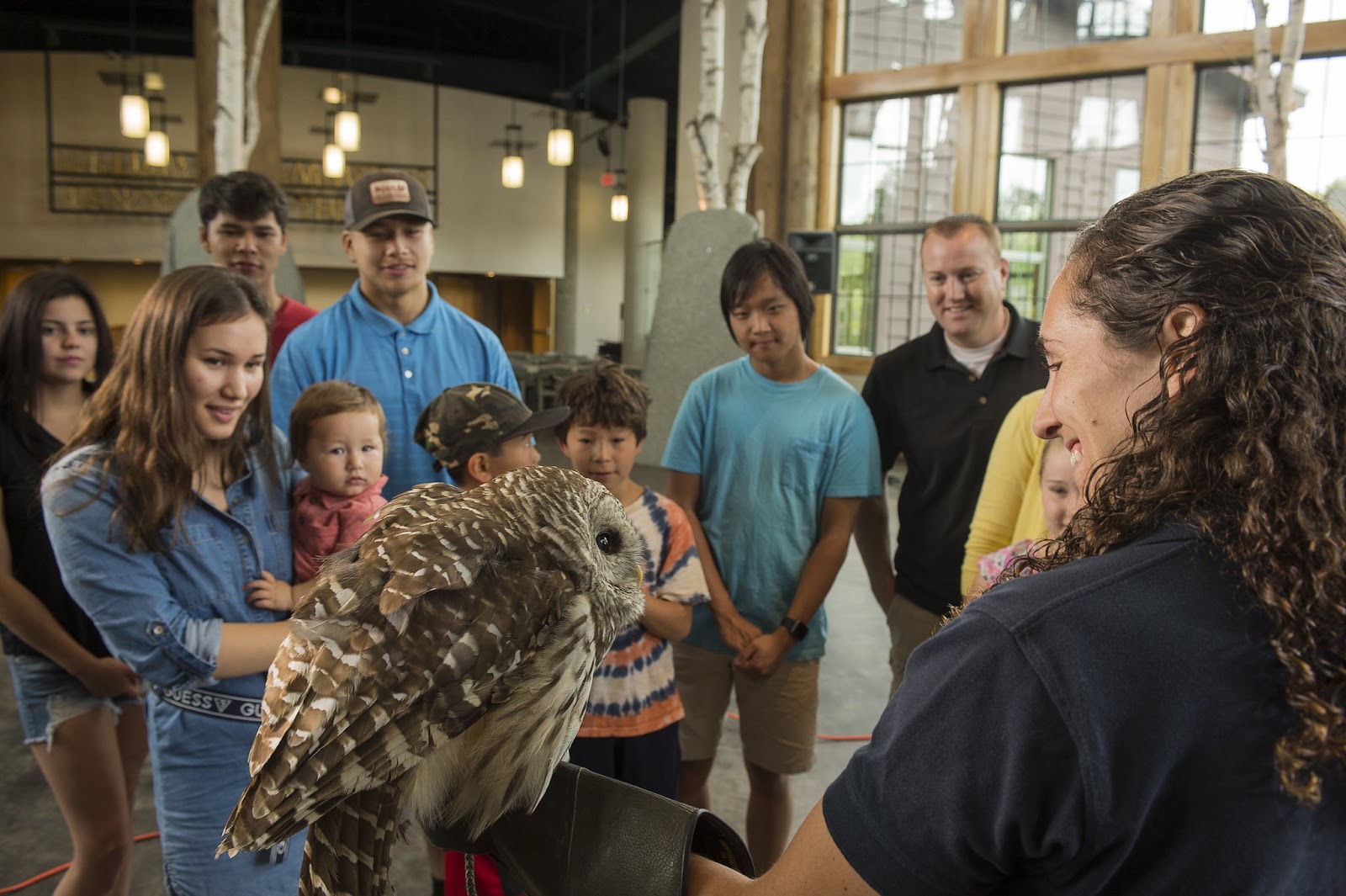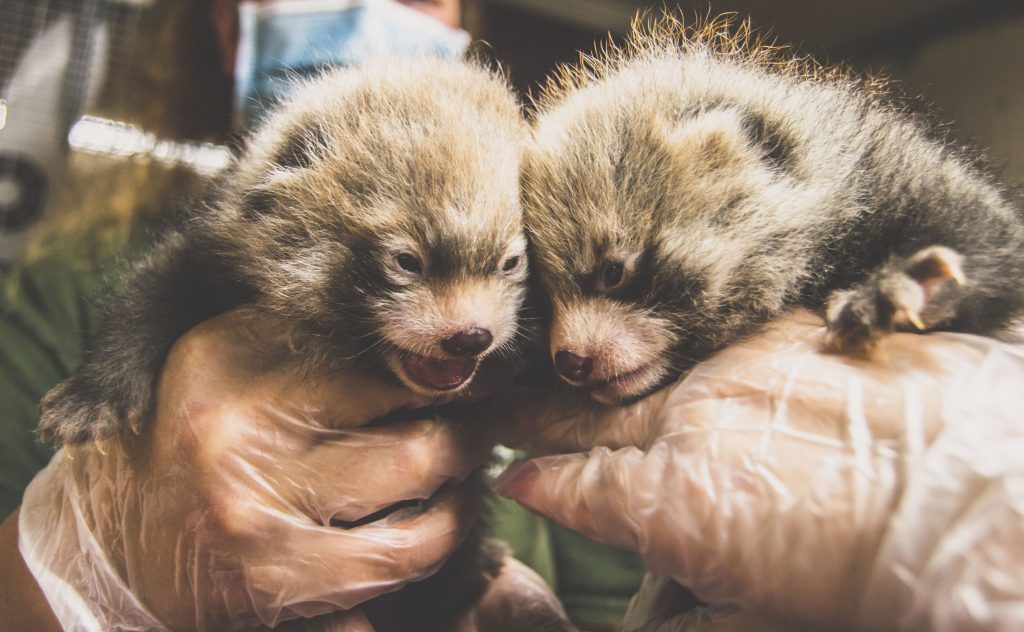By Aaron Bouska, VP for Government & Community Relations at the New York Botanical Garden and Secretary for the Coalition of Living Museums
From the Buffalo Zoo to the Old Westbury Gardens and everywhere in between, the Zoos, Botanical Gardens, and Aquaria (ZBGA) line of New York State’s Environmental Protection Fund (EPF) directly supports essential staff caring for living collections of 95 zoos, botanical gardens, nature centers and aquaria in every corner of NY State. Now in its forty-third year, the ZBGA program is unique to the Empire State and thanks to the State Assembly and Senate, the program has thrived and the benefits to New York residents have multiplied.
 An aerial view of the NY Botanical Garden Conservatory at dusk. Photo by Robert Benson Photography
An aerial view of the NY Botanical Garden Conservatory at dusk. Photo by Robert Benson Photography
Despite the program’s successes, living museums now face a State budget challenge. The SFY [State Fiscal Year] 21/22 Executive Budget proposes a $300M EPF, a dedicated source of funding for dozens of programs like ZBGA that are critical to protecting clean water and air, preserving open space, creating jobs and preserving the State’s environment. For reasons that are not clear, the Executive Budget also disproportionately cuts the ZBGA appropriation by 19%, reducing the statewide fund from $16M down to $13M.
A $3M cut to ZBGA may result in proportionate cuts to each grant recipient—a reduction too severe for any non-profit organization—even in the best of times. Like every cultural organization and non-profit, living museums face unprecedented challenges resulting from the COVID-19 pandemic. Safety of staff and visitors always comes first, but essential staff need to care every day for living animals and plants—one cannot just quarantine the palm trees in the basement until the pandemic passes.
 Animal Encounter at The Wild Center, photo courtesy of The Wild Center
Animal Encounter at The Wild Center, photo courtesy of The Wild Center
Living museums have proven they are safe experiences for the public and families by enforcing behavior that science has shown to be effective – social distancing, outdoor experiences, and mask wearing. Yet one year into this crisis, living museums remain subject to an outdoor 33% capacity restriction. This capacity mandate, while understandable in the early days, severely restricts earned income while keeping us from welcoming more families seeking safe activities in the outdoors.
 Red panda cubs at the Utica Zoo, photo courtesy of the Utica Zoo
Red panda cubs at the Utica Zoo, photo courtesy of the Utica Zoo
Here are just three reasons why restoration should be a priority:
1. Restoring ZBGA to $16M helps keep living museums accessible to the public at a time when families need outdoor experiences:
New Yorkers yearn for safe outdoor experiences as evidenced in the audiences welcomed since our collective re-openings in July. Local residents want a curated experience, with timed entries and capacity limits that keep their family safer than alternative outdoor experiences without such controls and safeguards. We receive appreciation every day for our enforcement of mask wearing, social distancing practices, and careful, daily monitoring of our employees’ health.
Access to safe green space, particularly in urban areas, is an issue of equity and fairness. Our visitors are often our neighbors, many of whom are not able to travel to one of our magnificent State Parks. In staying close to home, many also experience large crowds and the lack of safety enforcement in our municipal park systems. Even though living museums’ earned income has been curtailed by the 33% capacity restriction, all of us have created new programs for reduced or no-cost admissions. In short, botanical gardens and zoos help to meet demand for outdoor space at a time when New Yorkers’ mental and physical health need the extra boost resulting from time outdoors.
2. Restoring ZBGA to $16M maintains employment and fuels local economic development:
Living museums provide more than quality environmental education and uniquely beautiful tourist destinations; they are strong economic engines during difficult times. Leveraging ZBGA funding awarded through a competitive grants process, living museums employ more than 210 full-time and 2700 part-time New York State residents and generate hundreds of millions of dollars each year for the State in tourism dollars and economic development.
Institutions like the Wild Center in Tupper Lake, the Utica Zoo, and the Theodore Roosevelt Sanctuary and Audubon Center on Long Island are core to stabilizing local economies by providing good paying jobs and supporting local businesses. Wildlife Conservation Society and the New York Botanical Garden both have a major economic impact upon the Bronx and New York City – generating significant amounts of employment, purchasing goods and services, and drawing visitors and visitor spending to the city. This impact benefits not just the private sector, but also generates substantial tax revenues through sales and income tax receipts from employees.
3. Restoring ZBGA to $16M maintains quality environmental literacy programs statewide:
While living museums advance their missions by helping to breed and protect endangered species, addressing the impacts of global climate change, and fighting the spread of invasive species, we are most proud of educating and inspiring thousands of public school teachers and millions of school children, literally growing the next generation of conservation stewards. It is not a stretch to say that living museums are the state’s heartbeat of ecological literacy. Critical to the goals of the EPF, living museums educate the next generation of conservation stewards and create an informed electorate that values and understands the severe threat to our planet posed by climate change.
In the time of COVID, living museums have pivoted to providing rich, educational experiences online for classrooms and teachers. Education has not stopped, and audiences have expanded for our free online activities for children and families.
Living Museums are extremely grateful to the NY Assembly and NY Senate for growing and protecting this program over the last decade. Now is the time to maintain this historic investment, and we are very grateful to have leaders like Assemblyman Steven Englebright, Senator Todd Kaminsky, Senator Jose Serrano, Senator Diane Savino and Assemblyman Daniel O’Donnell leading restoration efforts in the Legislature.
If you are interested in helping to restore ZBGA, you may take direct action by visiting: https://secure.wcs.org/campaign/tell-albany-restore-nys-zbga-funding?ms=M_REF_ADV_13_F02_2102-NYS-ZBGA-CLM
